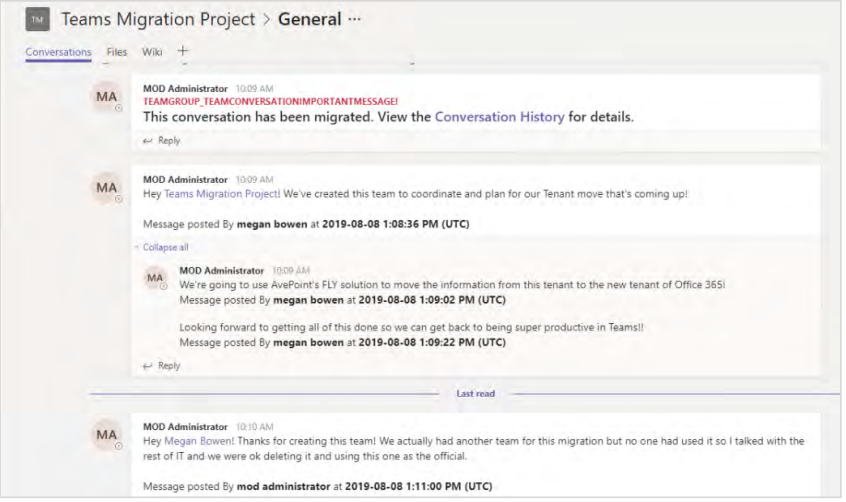Preparing for Microsoft 365: 3 Vital Steps

Get the full cloud consolidation rundown with our ebook “Consolidating Cloud Services and Fully Leveraging Microsoft 365!”
Read our other posts on cloud consolidation below:
- 5 Ways Microsoft 365 Streamlines Your Cloud Services
- How to Handle Microsoft 365 Migration Pitfalls
- The Increasing Problem of Cloud Services Sprawl
We’ve talked about the beauty of the cloud, and how cloud services have revolutionized what’s possible for organizations across the world. But we face a pandemic of cloud proliferation that has to be dealt with before it destroys the many gains that are possible through cloud services.
To this end, we’ve dived into concept of cloud consolidation, enumerating the benefits available from making strategic choices about cloud services, with cost savings being only one of the benefits (and in many ways, the least important).
So let’s get down to the practical next steps in this section. How do we actually go about consolidating the number of cloud services in use, with Microsoft 365 as the strategic destination platform?
Discover the Scope of the Opportunity for Cloud Consolidation
Getting your arms around the scope of cloud services in use is the first step.
While most organizations have embraced a multi-cloud strategy in terms of sanctioned cloud services, what is often hidden is the extent of shadow IT in use. Sanctioned services will number in the tens, but unsanctioned services can number in the hundreds or thousands.
Use automated discovery tools to create a first-pass inventory of what is currently being used. CASBs like Microsoft Cloud App Security will help in this endeavor, as well as endpoint auditing tools.

If your organization has access to specific software asset inventory capabilities, see what you can find out with these. You will want to be on the lookout for popular solutions that have overlapping capabilities with Microsoft 365—many of which were listed earlier in this eBook—for example, Slack, Box, DropBox, and WebEx.
Automated discovery will usually need to be complemented with manual efforts, however, which involves interviewing (or surveying) business groups and teams on the cloud services (and on-premises apps too) they are using to perform their work.
Remember, you aren’t only on the hunt for cloud collaboration software, but process and functionality overlap. For example, AvePoint’s phone bill didn’t show up as a cloud service line item, but ditching it for Microsoft Teams resulted in significant cost savings. Likewise, your custom mobile app development process won’t appear as a recurring cloud services cost, but you may be able to realize significant savings with PowerPlatform.
Planning to consolidate your cloud platform? This post is pretty helpful: Click To TweetDevelop Your Reference IT Architecture for Cloud Services
Informed by the discovery analysis from Step 1, which services currently being used are strategic to your organization and why? It is possible that you may discover a collection of subpar cloud services that all need to be eliminated in preference for a new strategic play.
Strategic value encompasses benefits on offer, integration with complementary services (for enhancing the employee experience), and the maturity of the security and compliance capabilities available.
AvePoint is a strategic advisor to organizations on cloud consolidation, and we highly recommend that the development of this architecture includes representation from business units beyond just IT. There’s great value to be gained from this collaboration.
While business managers are likely to require education to see the possibilities in Microsoft 365 beyond just email and using the calendar in the cloud, IT, for its part, will require education from business units on business scenarios (use cases), requirements, and preferences.
The output of Step 2 is a list of cloud services that will remain in use or be introduced as net-new services, along with a list of services to eliminate.

Build the Business Case and Requirements for Consolidation
Prepare the business case for cloud consolidation, painting the picture of the current state versus the ideal future state. The nature and scope of your business case will depend on the level of changes to cloud services being advocated for your organization, the investment of time and money required, and the extent of adoption support anticipated.
There are short-term and long-term benefits to be gained from cloud consolidation, and some of the ones we have explored in this eBook will resonate with your organization more than others.
Likewise, there will be costs to budget for, including cloud service fees, consulting support and migration tools to move the necessary data to your strategic destination platform. Timeframes for making changes should also be outlined in the business case, as should your plan for sustainable adoption (a topic we have lots of material on).
Many vendors—including AvePoint—offer a free migration discovery consultation to scan your environment to provide an accurate estimate of the time and cost associated with migrating data and
consolidating your services. This can be invaluable to uncover hidden tripwires for data or workflows that may be more difficult to migrate.

During this stage you will want to consider your migration requirements. The most important requirements to consider are ensuring you retain the full fidelity of the data, all associated metadata, and the ability to minimize impact on the organization.
For example, if you are migrating from Slack to Microsoft Teams, there is likely important context and business data contained within the persistent chat of channels. AvePoint FLY is one of the only vendors that can map and migrate that data fully to Teams channel conversations. We have done so successfully for multiple organizations already.
If your organization is large or your migration is very complex spanning countries or tenants, you may want to consider migration services to minimize impact on the end user.
Learn a few other handy steps to help you get started in the full ebook!
As the former Content Marketing Specialist for AvePoint, Brent led the strategy and direction of all AvePoint's blog properties.



